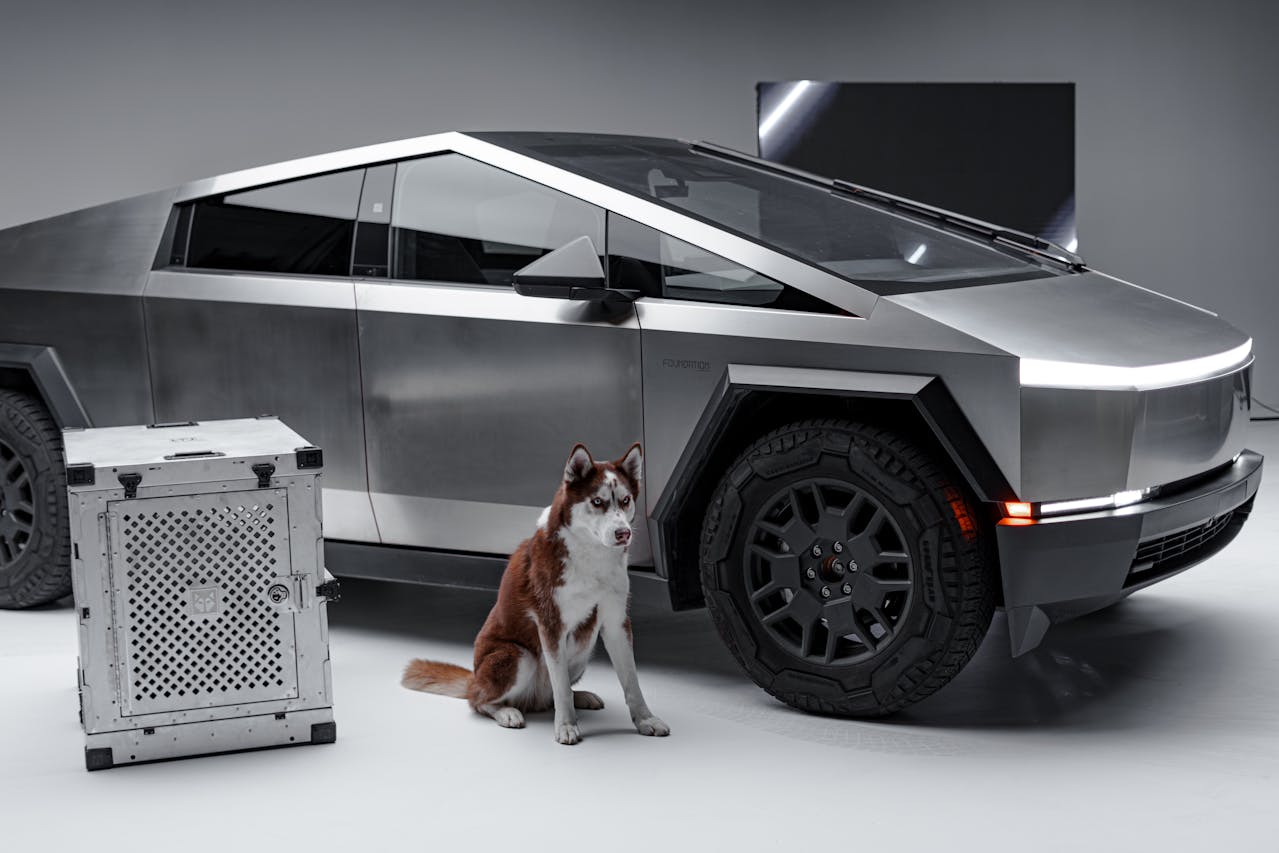Full Breakdown of Autonomous Driving Stocks: 5 Top Picks for 2025
Autonomous driving is no longer just a futuristic dream. In 2025, the global driverless car industry is entering a stage of real competition. From L2+ assisted driving to fully autonomous robotaxis, the technological landscape is rapidly evolving. For investors, this isn’t just a tech trend—it’s a billion-dollar opportunity.
So, which listed companies are the real winners in the autonomous driving space? This article will analyze five high-potential autonomous driving concept stocks worth watching in 2025, based on the latest developments in the U.S. and global markets.
1. Nvidia (NASDAQ: NVDA)
The Brain Behind Global Self-Driving Systems
Nvidia is no longer just a graphics chip manufacturer—it has become the core computing provider for autonomous driving. From Tesla to Mercedes-Benz, and even Chinese companies like XPeng and NIO, most L2+ and above autonomous driving systems are powered by Nvidia’s Orin or upcoming Thor chips.
Why it’s worth watching:
- Over 80% of L2+/L3 system providers use Nvidia chips
- In 2025, Nvidia’s Thor chip (successor to Orin) will enter mass production, integrating computing for perception, decision-making, and cockpit
- High customer stickiness, with large-scale automotive customers pre-ordering chips two years in advance
- Expected automotive revenue to exceed $3 billion in 2025
Risks:
- High dependence on the automotive market cycle
- Chip production and delivery delays due to global supply chain instability
2. Tesla (NASDAQ: TSLA)
A Vertical Integrator of Self-Driving
While many carmakers rely on third-party solutions, Tesla insists on an end-to-end self-developed Full Self-Driving (FSD) system. Its vision-only autonomous driving path is controversial, but still leads in data volume and real-world testing.
Is Tesla FSD Beta Safe in 2025? Real User Reviews & Safety Analysis
Why it’s worth watching:
- Over 1 million FSD beta testers worldwide, far exceeding competitors
- Custom-built Dojo supercomputer is designed specifically for self-driving model training
- Tesla Robotaxi is expected to officially debut in late 2025, potentially becoming a new business model
Risks:
- Tesla’s self-driving timeline has been repeatedly delayed
- Vision-only approach may encounter regulatory resistance in Europe and some U.S. states
3. Alphabet (NASDAQ: GOOGL)
Waymo—The Purest Robotaxi Play
Waymo, under Alphabet, is one of the earliest players in full autonomous driving. Unlike Tesla, Waymo completely eliminates human drivers and relies on LiDAR, radar, and HD maps. In 2025, Waymo has already launched robotaxi services in multiple U.S. cities.
Why it’s worth watching:
- Operates a fully driverless robotaxi fleet in Phoenix, San Francisco, and Los Angeles
- Partnered with Uber and Lyft to expand user base
- Possesses massive road data and AI modeling capabilities
Risks:
- Robotaxi profitability remains uncertain
- High R&D and operational costs
- Not separately listed, must be invested in via Alphabet
4. Mobileye (NASDAQ: MBLY)
From Safety to Full Autonomy
Once a Tier 2 supplier for ADAS, Mobileye has transformed into a full-stack self-driving solution provider. With support from Intel, Mobileye was re-listed in 2022 and now serves both traditional automakers and robotaxi fleets.
Why it’s worth watching:
- Over 150 million vehicles globally equipped with Mobileye chips
- Introduced Mobileye SuperVision and Chauffeur solutions for L2+/L3 autonomous driving
- Deep collaborations with Volkswagen, Zeekr, and others
Risks:
- Fierce competition from Nvidia and Qualcomm in the chip space
- Reliant on automaker mass production timelines
5. Aurora Innovation (NASDAQ: AUR)
Commercial Trucking’s Autonomous Future
Unlike others focusing on passenger vehicles, Aurora focuses on autonomous long-haul trucking. Its Aurora Driver system is designed for Class 8 freight trucks and has partnered with giants like FedEx and Uber Freight.
Why it’s worth watching:
- Targeting the massive $700B+ U.S. freight market
- Plans to commercialize its driverless freight network in late 2025
- Cost reduction focus and pilot programs in Texas show real-world traction
Risks:
- Small market cap and still in heavy R&D phase
- Uncertainty in logistics sector adoption
Final Thoughts: How Should Investors Approach Autonomous Driving in 2025?
The autonomous driving industry in 2025 is no longer just hype. Mass production of L2+/L3 systems, maturing robotaxi trials, and dedicated hardware like Nvidia’s Thor chip are all signs that we are entering the commercialization phase.
However, investors need to be cautious of the following:
- Regulatory uncertainty, especially in Europe and certain U.S. states
- High R&D costs and long monetization cycles
- The gap between demo-level performance and real-world deployment
For investors who believe in the long-term future of autonomous driving, allocating a portion of capital into key players like Nvidia, Tesla, or Mobileye could be worthwhile. But remember: this is still a high-risk, high-reward sector—diversification and long-term patience are key.
Related Topics You Might Like:
- AI Stocks That Surged with ChatGPT: Biggest Winners in the U.S. Market
- How to Buy Autonomous Car Insurance in 2025: A Complete Guide
- The Legal Grey Area of Autonomous Vehicle Accidents
- How Will Autonomous Car Insurance Work in Future?
📢 Help us grow! If you found this article insightful, please consider sharing it with your network or leaving a comment below. Your support helps us create more high-quality, data-driven content!



